Jazz post-bop: «Masqualero» y «The Sorcerer» [ESP/ENG]
(Edited)
Masqualero
Wayne Shorter (saxo tenor), Miles Davis (trompeta), Herbie Hancock (piano), Ron Carter (contrabajo) y Tony Williams (batería). Extraído del álbum Sorcerer (1967) de Miles Davis.
En 1955 Miles Davis fue invitado a la segunda edición anual del Newport Jazz Festival y causó una fuerte impresión tocando «’Round Midnight» tanto en los críticos como en el público, siendo el momento crucial de su carrera. Esto le permitió firmar un contrato con el importante sello Columbia, pero todavía tenía que grabar cuatro álbums para Prestige Records. Entonces, formó su primer quinteto compuesto por él mismo a la trompeta, John Coltrane al saxo tenor, Red Garland al piano, Paul Chambers al contrabajo y Philly Joe Jones a la batería, y grabó ‘Round About Midnight para Columbia y Cookin’, Workin’, Relaxin’ y Steamin’ para Prestige. Aunque este primer quinteto solo duró de 1955 a 1957, pasó a la historia como uno de los grupos de hard bop más interesantes de la década de los años cincuenta. Era una banda en la que diferentes personalidades musicales coexistían, se felicitaban y se inspiraban mutuamente. Davis tocaba discursos largos, legato y melódicos mientras Coltrane contrastaba con enérgicos solos.
In 1955 Davis was invited to the second annual edition of the Newport Jazz Festival and made a strong impression playing “’Round Midnight” to both critics and the public, being the turning point of his career. This allowed him to sign a contract with the important Columbia label, but he still had to record four albums for Prestige Records. Then, he formed his first quintet composed by himself on trumpet, John Coltrane on tenor sax, Red Garland on piano, Paul Chambers on double bass and Philly Joe Jones on drums, and recorded ‘Round About Midnight for Columbia and Cookin’, Workin’, Relaxin’ and Steamin’ for Prestige. Although this first quintet only lasted from 1955 to 1957, it went down in history as one of the most interesting hard bop groups of the 1950s. It was a band in which different musical personalities coexisted, congratulated and inspired each other. Davis played long, legato and melodic discourses while Coltrane contrasted with energetic solos.
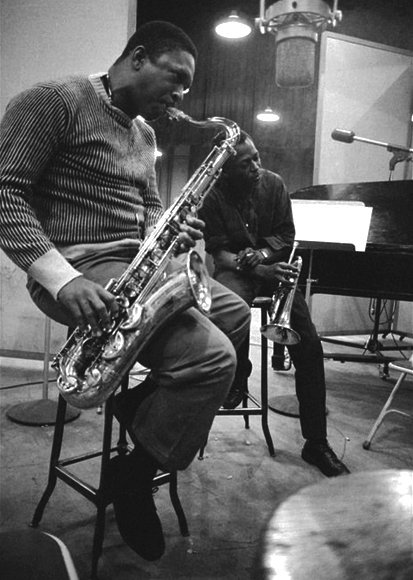
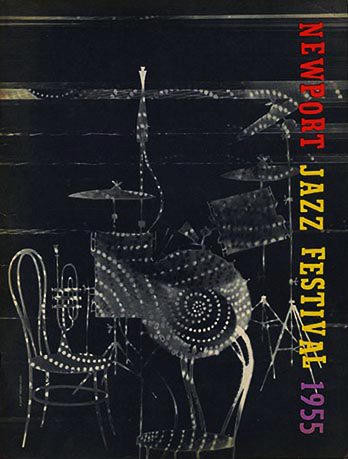
En 1956 Davis hizo una gira por norteamérica con su quinteto, pero tenían discusiones continuas porque Coltrane y Jones eran adictos a la heroína, y Davis quería llevar una vida sana, aunque todavía tomaba cocaína. Al final de la gira los sustituyó por Sonny Rollins y Art Taylor respectivamente. En 1957, Davis se asoció de nuevo con el compositor y arreglista Gil Evans y grabó su segundo álbum para el sello Columbia, Miles Ahead, donde tocó con una big band. Crearon una serie de temas de claroscuros unidos por pasajes compuestos por Evans y Davis tocaba el fliscorno flotando por encima de sus armonías impresionistas. Ese mismo año volvió a Paris para grabar la banda sonora de la película Ascenseur pour l’échafaud, en la que el grupo no utilizó partituras, sino que grababan a medida que veía la película.
In 1956 Davis toured North America with his quintet, but they had ongoing arguments because Coltrane and Jones were heroin addicts, and Davis wanted to lead a healthy life, although he still took cocaine. At the end of the tour he replaced them with Sonny Rollins and Art Taylor respectively. In 1957, Davis teamed up again with composer and arranger Gil Evans and recorded his second album for the Columbia label, Miles Ahead, where he played with a big band. They created a series of chiaroscuro themes linked by passages composed by Evans and Davis played the flugelhorn floating above his impressionistic harmonies. That same year he returned to Paris to record the soundtrack for the film Ascenseur pour l’échafaud, in which the group didn’t use sheet music, but recorded as they watched the film.
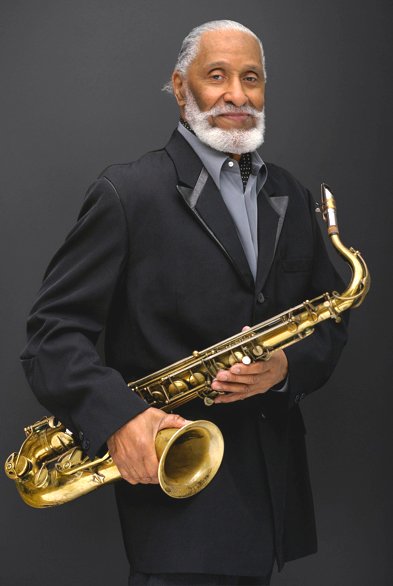
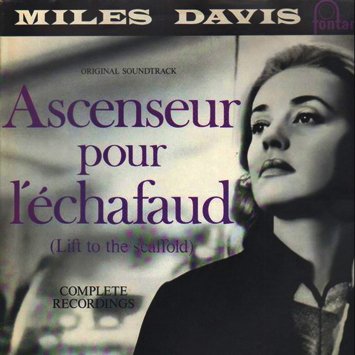
La sección rítmica hace una breve introducción y luego se incorporan Shorter y Davis para exponer un tema lúgubre e inusual. El primero en tocar es Davis con un solo sombrío y taciturno que a veces se enciende, y que al final se libera y se abre sin restricciones. Le sigue Shorter tocando de forma tranquila, pero pronto utiliza frases sugerentes y llamativas con silencios entre ellas mientras Williams lo empuja con la batería. A continuación entra Hancock, acompañado por Carter de forma insuperable, con una línea melódica extravagante que luego suaviza hasta el punto de contemplar cada nota y termina tocando acordes. Para finalizar, el grupo reexpone el tema.
The rhythm section makes a brief introduction and then Shorter and Davis join in to expose a gloomy and unusual theme. The first one to play is Davis with a somber and taciturn solo that sometimes warms up and finally releases and opens without restrictions. Shorter follows him playing quietly, but soon uses suggestive and striking phrases with silences between them while Williams pushes him with the drums. Next comes Hancock, accompanied by Carter in an unbeatable way, with an extravagant melodic line that then softens to the point of contemplating each note and ends up playing chords. To finish, the group re-exposes the theme.
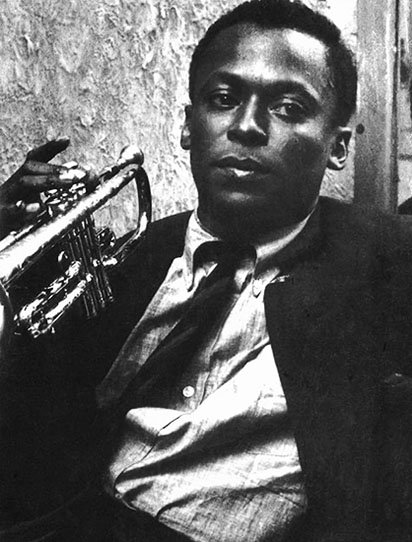
Translated with the help of DeepL

The Sorcerer
Wayne Shorter (saxo tenor), Miles Davis (trompeta), Herbie Hancock (piano), Ron Carter (contrabajo) y Tony Williams (batería). Extraído del álbum Sorcerer (1967) de Miles Davis.
Shorter empieza a expone el tema a un ritmo rápido y luego se le une Davis. A continuación ambos comparten solos de cuatro compases dando lugar a un discurso vivo e intrépido en el que se entienden perfectamente. Se podría decir que está tocando un solo músico con dos acentos distintos y causan un efecto de riqueza melódica original. Luego vuelven a presentar el tema con energía dando paso al solo de Hancock, cuya línea melódica es audaz y entusiasta, antes de que el grupo reexponga el tema.
Shorter begins to expose the theme at a swift pace and then Davis joins him. Then the two share four-bar solos giving rise to a lively and intrepid discourse in which their understanding stands out. One could say that a single musician is playing with two different accents and they cause an effect of original melodic richness. Then, they present the theme again with energy, giving way to Hancock’s solo, whose melodic line is bold and enthusiastic, before the group re-exposes the theme.

0
0
0.000
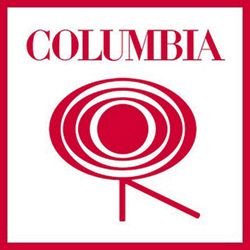

https://twitter.com/lee19389/status/1772580391062290830
#hive #posh
¡Enhorabuena!
✅ Has hecho un buen trabajo, por lo cual tu publicación ha sido valorada y ha recibido el apoyo de parte de CHESS BROTHERS ♔ 💪
♟ Te invitamos a usar nuestra etiqueta #chessbrothers y a que aprendas más sobre nosotros.
♟♟ También puedes contactarnos en nuestro servidor de Discord y promocionar allí tus publicaciones.
♟♟♟ Considera unirte a nuestro trail de curación para que trabajemos en equipo y recibas recompensas automáticamente.
♞♟ Echa un vistazo a nuestra cuenta @chessbrotherspro para que te informes sobre el proceso de curación llevado a diario por nuestro equipo.
🏅 Si quieres obtener ganancias con tu delegacion de HP y apoyar a nuestro proyecto, te invitamos a unirte al plan Master Investor. Aquí puedes aprender cómo hacerlo.
Cordialmente
El equipo de CHESS BROTHERS